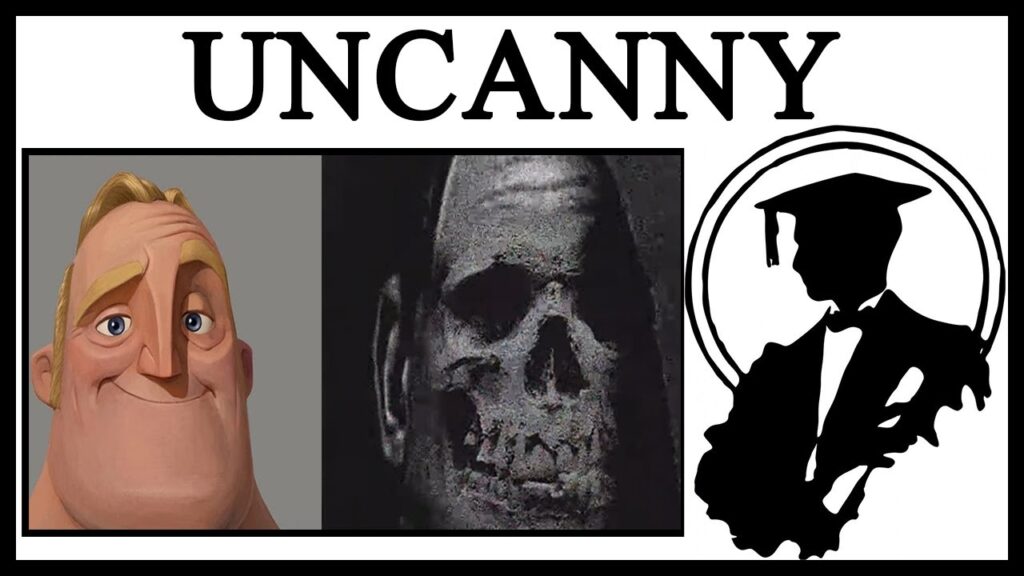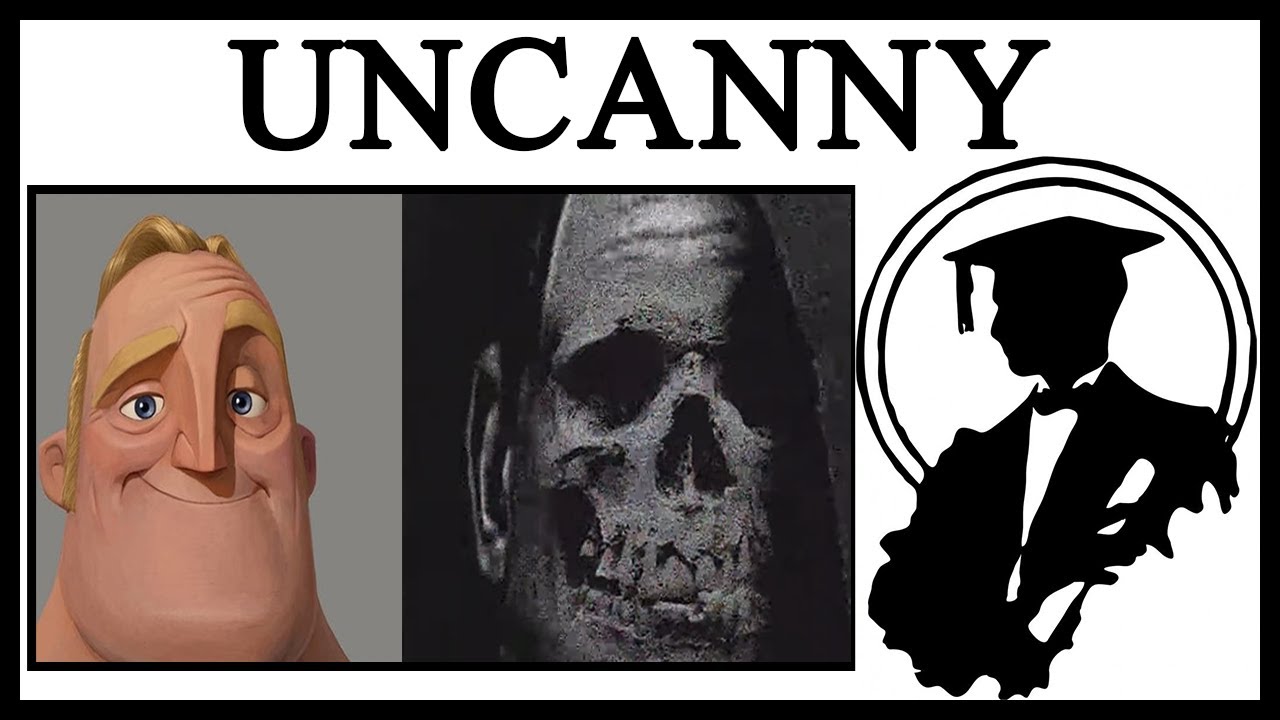
Uncanny Memes: Exploring the Deeply Disturbing and Strangely Addictive World of Internet Humor
The internet, a vast and ever-evolving landscape of information and entertainment, has birthed countless trends, challenges, and, of course, memes. Among these, a particularly peculiar category has emerged: uncanny memes. These memes, often unsettling and strangely captivating, play on the human fascination with the borderline between the familiar and the foreign, the comforting and the creepy. This article delves into the world of uncanny memes, exploring their origins, psychological underpinnings, popular examples, and cultural impact.
What Makes a Meme Uncanny?
The term “uncanny” itself, derived from the German “unheimlich,” refers to something that is strangely familiar yet disturbingly unfamiliar. This feeling often arises when encountering objects or situations that blur the lines between reality and artifice, life and death, or human and machine. Uncanny memes, therefore, leverage this sense of unease by presenting images, videos, or text that evoke a feeling of discomfort and disorientation.
Several elements contribute to the uncanny nature of these memes:
- Distorted Familiarity: Many uncanny memes feature recognizable characters or objects that have been altered in subtle yet unsettling ways. This might involve exaggerated features, unnatural movements, or a general sense of something being “off.”
- The Uncanny Valley: This concept, originally developed in robotics, describes the dip in emotional response when encountering entities that closely resemble humans but fall short of perfect realism. This effect is frequently exploited in uncanny memes, particularly those involving CGI or digitally altered images.
- Existential Dread: Some uncanny memes tap into deeper anxieties about mortality, identity, and the nature of reality. These memes often present scenarios that challenge our understanding of the world and our place within it.
- Humor and Absurdity: While unsettling, uncanny memes also often incorporate elements of humor and absurdity. This juxtaposition of the disturbing and the comical can create a uniquely engaging and thought-provoking experience.
The Origins of Uncanny Memes
The roots of uncanny memes can be traced back to various sources, including:
- Creepypasta: These internet horror stories, often shared anonymously on forums and social media, frequently explore themes of the uncanny and the supernatural. Many uncanny memes draw inspiration from creepypasta narratives and characters.
- Analog Horror: This subgenre of horror utilizes the aesthetics of old VHS tapes and broadcast signals to create a sense of unease and disorientation. Analog horror elements are often incorporated into uncanny memes to enhance their unsettling effect.
- Weirdcore/Dreamcore: These aesthetics focus on liminal spaces, distorted realities, and nostalgic imagery, often evoking a sense of childhood memories and unsettling familiarity. Uncanny memes frequently draw upon these visual styles.
The rise of platforms like YouTube, Reddit, and TikTok has further fueled the popularity of uncanny memes, allowing creators to easily share and disseminate their unsettling creations to a wide audience. The anonymous nature of the internet also allows for greater experimentation and the exploration of darker themes.
Popular Examples of Uncanny Memes
Numerous examples of uncanny memes have gained widespread popularity online. Here are a few notable examples:
- Smiling Dog (Smile.jpg): This infamous image, often associated with a creepypasta story, features a dog-like creature with an unnaturally wide grin. The image is said to induce seizures and psychological distress in those who view it.
- Momo: This unsettling sculpture, featuring a woman with bulging eyes and a wide smile, became associated with a viral hoax claiming that it encouraged children to engage in dangerous behavior. While the hoax was debunked, the image of Momo remains a popular symbol of uncanny memes.
- CGI Humans: Many uncanny memes feature CGI characters that are designed to look like real humans but fall short of perfect realism. These characters often evoke a sense of discomfort due to their unnatural movements and expressions.
- Liminal Space Photos: Images of empty hallways, deserted playgrounds, and other liminal spaces often evoke a sense of unease and disorientation. These images are frequently used in uncanny memes to create a feeling of isolation and dread.
- Distorted Cartoon Characters: Altered images of familiar cartoon characters, such as Mickey Mouse or Spongebob Squarepants, can be surprisingly unsettling. These memes often play on the contrast between the characters’ innocent origins and their distorted appearances.
The Psychology Behind Uncanny Memes
The appeal of uncanny memes lies in their ability to tap into our primal fears and anxieties. By presenting us with images and scenarios that challenge our understanding of the world, these memes force us to confront our own mortality and the limitations of our perception.
Several psychological theories can help explain the fascination with uncanny memes:
- Terror Management Theory: This theory suggests that humans cope with the fear of death by developing cultural beliefs and values that provide a sense of meaning and purpose. Uncanny memes, by reminding us of our mortality, can trigger a defensive response, leading us to seek out experiences that reinforce our sense of self-worth.
- The Information Gap Theory: This theory proposes that we are drawn to information that challenges our existing beliefs and knowledge. Uncanny memes, by presenting us with unfamiliar and unsettling scenarios, can pique our curiosity and drive us to seek out explanations.
- Catharsis: Some psychologists believe that experiencing fear and anxiety in a controlled environment can be cathartic, allowing us to release pent-up emotions and cope with real-life stressors. Uncanny memes, by providing a safe outlet for these emotions, can be surprisingly therapeutic.
The Cultural Impact of Uncanny Memes
Uncanny memes have had a significant impact on internet culture, influencing everything from art and music to fashion and social media trends. They have also sparked discussions about the nature of horror, the power of the internet, and the psychological effects of exposure to disturbing content.
Here are some of the ways in which uncanny memes have shaped online culture:
- The Rise of Internet Horror: Uncanny memes have played a key role in the growing popularity of internet horror, paving the way for new forms of storytelling and visual expression.
- The Blurring of Reality and Fiction: Uncanny memes often blur the lines between reality and fiction, challenging our perceptions of what is real and what is not. This blurring can have a profound impact on our understanding of the world and our place within it.
- The Democratization of Creativity: The ease with which uncanny memes can be created and shared has democratized the creative process, allowing anyone to participate in the creation of unsettling and thought-provoking content.
- The Power of Shared Experiences: Uncanny memes often create a sense of shared experience, bringing people together through their mutual fascination with the disturbing and the bizarre.
The Future of Uncanny Memes
As technology continues to evolve, so too will the world of uncanny memes. We can expect to see even more sophisticated and unsettling memes emerge in the future, pushing the boundaries of what is considered acceptable and challenging our perceptions of reality.
Some potential future trends in uncanny memes include:
- AI-Generated Memes: Artificial intelligence is already being used to generate realistic images and videos, and it is only a matter of time before AI-generated uncanny memes become commonplace.
- Virtual Reality and Augmented Reality Memes: These technologies will allow for even more immersive and unsettling meme experiences, blurring the lines between the virtual and the real.
- Personalized Uncanny Memes: As our online data becomes increasingly accessible, it may be possible to create personalized uncanny memes that are tailored to our individual fears and anxieties.
While the future of uncanny memes remains uncertain, one thing is clear: these unsettling and strangely addictive creations will continue to fascinate and disturb us for years to come. [See also: The Psychology of Internet Memes] [See also: The Evolution of Online Humor]
Conclusion
Uncanny memes represent a fascinating and often unsettling aspect of internet culture. By playing on our fears and anxieties, these memes force us to confront our own mortality and the limitations of our perception. While they may be disturbing, they also offer a unique and thought-provoking form of entertainment, pushing the boundaries of creativity and challenging our understanding of the world. Whether you find them amusing, unsettling, or a bit of both, there’s no denying the significant cultural impact of uncanny memes. They are a reflection of our collective anxieties and a testament to the power of the internet to create and disseminate even the most bizarre and unsettling content. The world of uncanny memes continues to evolve, promising even more disturbing and thought-provoking creations in the years to come. So, brace yourselves and prepare to enter the strange and unsettling world of uncanny memes.

